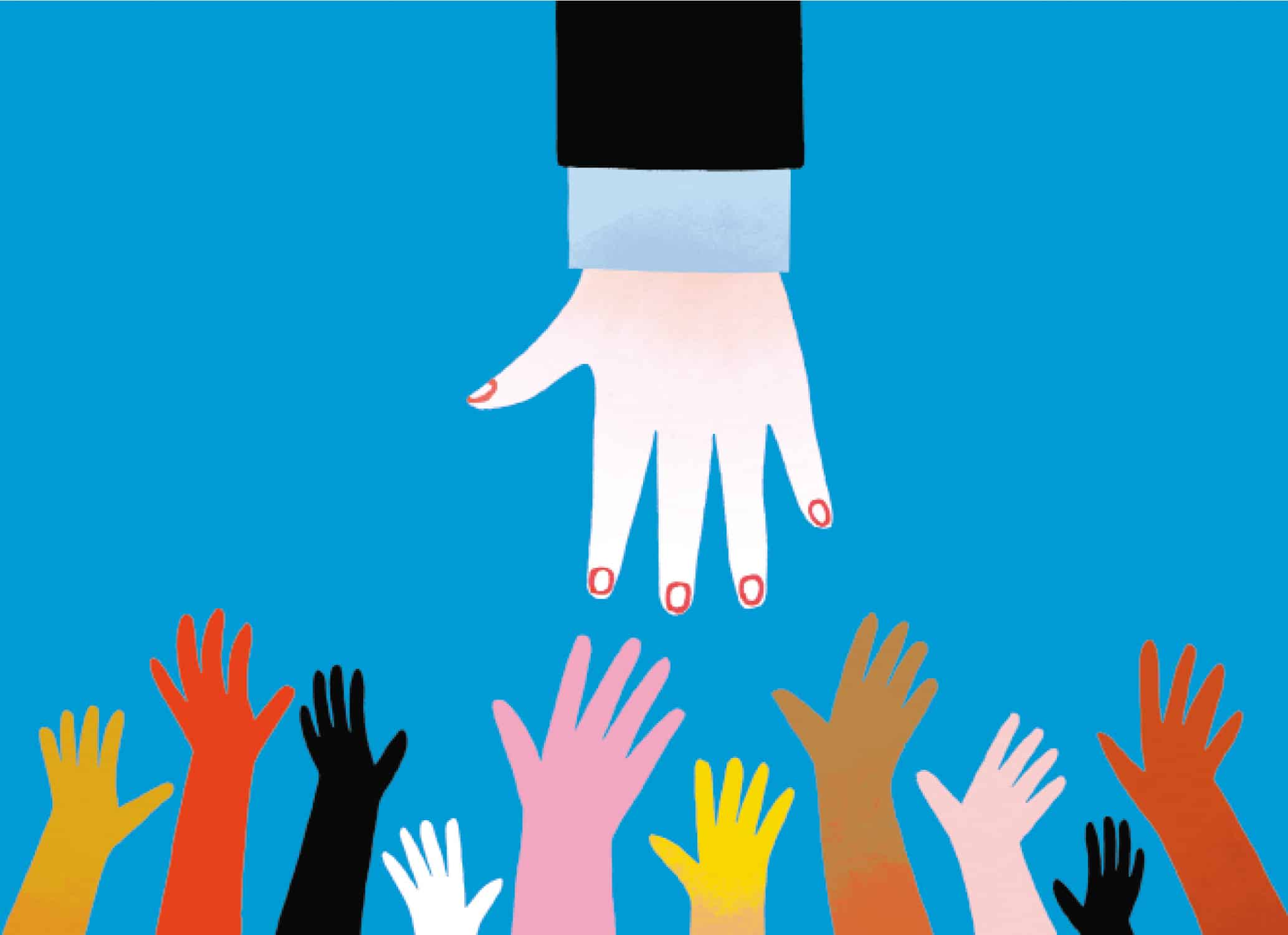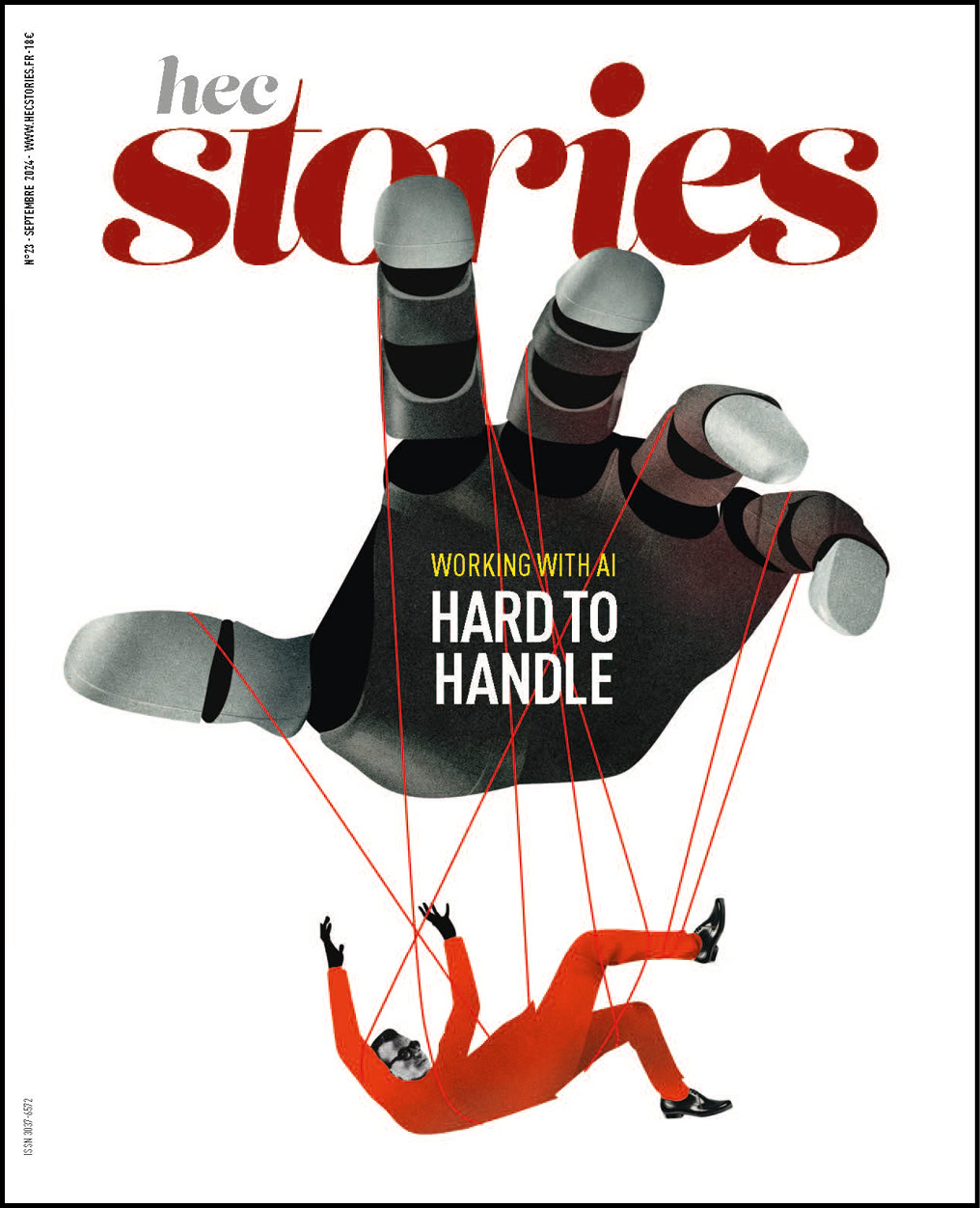10 Questions about fighting poverty

1. What does it mean to be poor today? Does the answer depend on cultures, countries and continents ?
Alicia Marguerie (H.12), economist at the World Bank specializing in employment and social protection
“There are two definitions of poverty: absolute and relative. Absolute poverty is measured by a fixed threshold, currently US$ 1.90 per day per person. Relative poverty takes into account the standard of living of a particular country. In developed economies, populations that are vulnerable or risk exclusion receive social-services support based on other criteria. Poverty takes different forms according to geography. In developing countries, the poor are people who work. Often they take on many low-paying jobs at the same time. In developed countries, in contrast, the poor are mainly people without jobs. They do not benefit from the strong family support typical in developing countries, but instead receive social support from governments. Both types of poverty are considered in the World Bank’s goals, which include both fighting extreme poverty, found mainly in developing countries, and fighting inequalities (relative poverty), found mainly among the poor living in wealthy countries.”
2. What methodology was used by Esther Duflo, who won the Nobel Prize in economics for her efforts to fight poverty?
Bénédicte Faivre-Tavignot (H.88), executive director of Centre S&O and co-founder of the Movement for Social * Business Impact (MS*BI)
“The randomized-experimentation approach developed by Esther Duflo was inspired by the “randomized” controlled trials that have long been used in medicine. She employed this approach to evaluate the effectiveness of assistance provided to the most disadvantaged members of a population by comparing the results of a selection of recipients to those of a control group. Her conclusions suggested that philanthropy plays a very important role in the struggle against poverty. In fact, donations and subsidies are necessary in dealing with important factors like health, nutrition and education, or responses to natural disasters. This methodology raises a few questions, however: it has been accused of favoring short-term micro-interventions, not being broadly applicable, and not taking systematic wealth inequalities into account. It seems clear that we should not rely only on philanthropy to achieve long-term development. At HEC, we feel closer to the philosophy of “social business” as defined by Muhammad Yunus, which relies on market mechanisms to combat poverty and allow the most disadvantaged to achieve autonomy. The adage ‘It’s better to teach a man how to fish than to give him a fish’ is still very true today!”
3. 413 million people are living below the poverty line in Africa. Is international aid doing its job ?
Fabien Bouvet (H.12), French advisor to the executive director at the World Bank and the IMF
“In 1990, 36% of the world’s population was living in conditions of extreme poverty, compared to 10% today. Poverty has therefore been reduced around the world, but not equally: it has continued to expand in sub-Saharan Africa, while considerable progress has been made in East Asia. The fight against poverty is still going on and demands significant international-development support, for which bilateral programs (USAID, Agence française de déveleloppement, etc.) are insufficient. Challenges like climate change, which will drive 100 million people into poverty by 2030, or the fight against pandemics, require global solutions. Multilateral institutions are more necessary than ever, both for the level of funding at their disposal and for their capacity to coordinate international efforts. In a world that has never been so in debt (US$184 billion), multilateralism can also help to prevent debt crises in developing countries. When there is no coordination among lenders, each can operate solely according to a particular agenda and be motivated only by commercial interests, which can drive a country to default on its loans. The only way to prevent this pitfall is to adopt an inclusive approach and to respect conditions for sustainable debt agreed on by all. At a time when the United States administration does not favor multilateralism, it is still the most efficient weapon in the fight against poverty.”

4. How has the reduction in key interest rates affected inequality?
Bertrand Badré (H.89), CEO of Blue Like and Orange Sustainable Capital
“The unprecedented phenomenon of zero (or negative) key interest rates in the United States and in Europe, regarded as a temporary exception to the rule a few months ago, has proven to be lasting. It reveals a new economic paradigm in developed countries. It could also contribute to a significant increase in inequalities, for which we are not prepared. For generations we have taught young people to be frugal to ensure their future and to save money in order to invest. How will this lesson play out over time? People who already have investments (real estate property or stocks, for example) are the chief beneficiaries of a basically automatic increase in values thanks to discounting future cash flows at a lower rate, even zero. In contrast, people who do not already have investments will face barriers to market entry and will see their savings lose value. Property-owners are the ones who will profit from low lending rates as they acquire new holdings, not first-time buyers! These “automatic” profits for stockholders will further widen the gap between rich and poor, even within the middle class. It will also divide generations. Young people today have to wait much longer to buy property and inherit, while their educations have become more and more costly. It will be harder for them to improve their status during their lifetimes. If this issue isn’t resolved, social injustice and the resentment it provokes will inevitably grow.”
5. During Greece’s economic crisis, the intervention of the “troika” impoverished the local population. Is Europe’s social system broken?
Athanase Contargyris (H.79), economist and founder of ATTAC Greece
“Before 2008, Greece had a growth rate of 4% to 8%, an unemployment rate of 8%, and a per capita GDP of €24,000. The 2008 crisis resulted in an explosion of Greece’s debts to European banks. In 2010, the country had to submit to the “troika” (the European Commission, the European Central Bank and the International Monetary Fund), which imposed measures that fell extremely hard on the poorest members of the population: reduction in retirement benefits, low salaries and increased VAT. By 2016, Greece had lost 25% of its per capita GDP: an economic disaster comparable to that of wartime. Strong family-based support systems helped Greece resist the widespread social disruption that many other countries experienced. Greece reached the end of this recovery plan in August 2018, and its tourism and export sectors bounced back. Unemployment dropped from 27% in 2013 to 17%. The country remains fragile and vulnerable to a rise in interest rates, however: its debt represents 180% of its GDP. Greece will have to deal with this for 50 years. The European Union acted in violation of the founding principles of the Treaty of Rome, which call for improving people’s quality of life and employment opportunities. This is not surprising: since the 1980s, there has been no commitment to a European social policy. The European Union has adopted measures to require countries to reduce their public-sector deficits, not to fight against poverty. European social policy is not broken: it doesn’t exist.”
6. One in five people living in the European Union is facing the threat of poverty. What is the EU doing to solve this problem?
Amélie de Montchalin (H.09), State Secretary for European Affairs
“The European Union provides essential support for national efforts to fight poverty. In France, the Fund for European Aid to the Most Deprived (FEAD) finances 30% of food-related aid, for example. Along with this concrete assistance, the Union also works to combat, preventatively, the underlying causes of poverty. Through the European Investment Bank, for example, the Juncker plan invests in making buildings more energy-efficient, which can dramatically reduce residents’ heating bills. The idea of a minimum European wage, proposed by France, was taken up by Nicolas Schmit, the EU commissioner in charge of employment and social rights. The principle behind this lower limit for a salary is designed to ensure “equal pay for equal work” throughout Europe, to combat inequalities in the EU, to avoid a rapid ‘race to the bottom’ socially, and to enhance quality of life for all. We must also keep an eye on digital micro-workers to make sure they aren’t left out in the future and that they are guaranteed basic occupational safety and health protections. The fight against poverty and social exclusion is a top priority for the new European Commission. The survival of our European social model and the respect of EU citizens for the European experiment depend on it.”
7. What is your opinion of the French government’s poverty plan?
Nicolas Bluche (H.73), administrator of Emmau ̈s Alternatives and president of the association from 2016 to October 2019
“To have a plan like this at all is a good thing, and this plan includes some praiseworthy ideas. We’ll have to see how the plan actually ends up helping the country’s nine million poor people, whose situation has gotten worse over the past two years, as INSEE statistics show. To date, the only programs that have been implemented are ones to benefit young children. Most other aspects of the plan are still at the intentions stage, not scheduled to be put into practice for quite a while (for example 2023!) and not yet funded. In addition, even if the plan’s budget seems significant (€8.5 billion), this represents only €950 per poor person. The “revenu universel d’activité” (RUA, or “universal payment for work”) initiative is supposed to simplify the social-benefits system by combining several services, like the APL for housing assistance, the activity bonus, and the RSA program for income support. Good idea. But many people who count on these programs, who are already very poor, are going to lose out. At the same time, the government is making decisions that actually go against fighting poverty; for example, it is cutting back on benefits and reducing funding for homeless shelters. The government says it will create 100,000 new jobs to bring people into the workforce, but at the same time it is cancelling subsidized work contracts. The government has already acted in favor of the rich, with the suppression of the wealth tax, and for the “yellow vests” with various measures announced in December 2019. The poor, who need help right now, can’t wait until 2023.”
 8. The Revenue de solidarité active (RSA) income-support program is 10 years old. How do you expect to fight poverty through this program? What is your opinion of its evolution?
8. The Revenue de solidarité active (RSA) income-support program is 10 years old. How do you expect to fight poverty through this program? What is your opinion of its evolution?
Martin Hirsch, director of the AP-HP (Assistance publique – Hôpitaux de Paris, the Paris public hospitals system) and co-president of the HEC Paris Social Business chair.
“The RSA was established to deal with a dual problem. The first was the perverse effect of the RMI (income support program), which was designed to provide a minimum income from which salaries earned through work were deducted. As a result, a person working part time did not earn more than someone who wasn’t working at all. For some families, when a person returned to the workforce, the family’s overall income was actually lower. The RSA corrected these discrepancies and raised the salary levels for part-time work. The other problem was the costs of work done by people with low productivity. While raising the minimum wage can have a negative effect on employment, the RSA, as an activity bonus, provides income in addition to a salary, without affecting work costs. The RSA was criticized for the fact that relatively few people used it. In fact, just before the subprime crisis, the government at the time, fearing that the RSA would be too popular, made entering the program much more difficult. When the RSA was accepted and simplified, more and more people began to use it, and statistics show a spectacular increase at the beginning of 2019. It is now possible to increase someone’s buying power by €100 at the minimum wage without increasing the costs of work and without trapping people into low salaries. It took 10 years….”
9. How can you help people living in extreme poverty to re-enter the workforce?
Nicolas Bluche (H.73), administrator of Emmau ̈s Alternatives and president of the association from 2016 to October 2019
“One of the tasks of Emmau ̈s Alternatives is to help people end their social exclusion through work. This reintegration is essential, but it is not enough in itself. The simplistic notion that providing someone “assistance” leads to laziness is false and dangerous. People who have been living in the streets for a long time aren’t capable of immediately working for 26 hours a week in a workforce-entry (insertion par l’activité économique, or IAE) contract. Emmau ̈s managed to set up a “first hours” initiative to help people begin to work again gradually, a few hours a week at the beginning. Only after this are they ready to enroll in the IAE program, in hopes of eventually being offered a permanent contract. To help people who have long been out of work to re-enter the workforce, deal with all the necessary paperwork, and eventually hold a job successfully, we have to go overboard with our assistance. Helping a person rejoin the workforce requires many kinds of support, for example concerning training, housing, health, food and clothing assistance, social services and more. To get the right results, a complete system needs to be put in place that is designed to deal with all the needs of people living in extreme poverty. This requires big budgets. Otherwise, it won’t work.”

10. How can the business world help to fight poverty?
Rémi Tricart (E.13), General Director of Emmau ̈s Défis
“I’ll start by making a wish. Companies must make sure that combating poverty is included in their mission statements and their strategies, so that as many people as possible will have access to their products and services, while they also commit themselves to treating their employees well. Every year, Emmau ̈s Défis finds ways to bring more than 200 people back into the workforce, and half of them leave our programs to find traditional jobs. Companies can help us in many ways. For example, financial sponsorships to support our activities that do not turn a profit, sponsorship in the form of donated products (which we can then sell in our stores or give to the most needy), or “expertise” sponsorships, through which a company can “loan” us a skilled professional for a few days or months, someone we don’t have the means to recruit ourselves. Of course, the main way companies can help us is by hiring the people whom we have assisted in our programs and who need to get back on their feet in a company that welcomes them, whether it is a small operation, an SME or a major corporation. We are currently working with such diverse companies as the catering service LeCadet, Franprix, Vinci, and Galeries Lafayette. Each person has a unique profile and a particular path toward reentering the workforce.”
Published by Marianne Gérard

